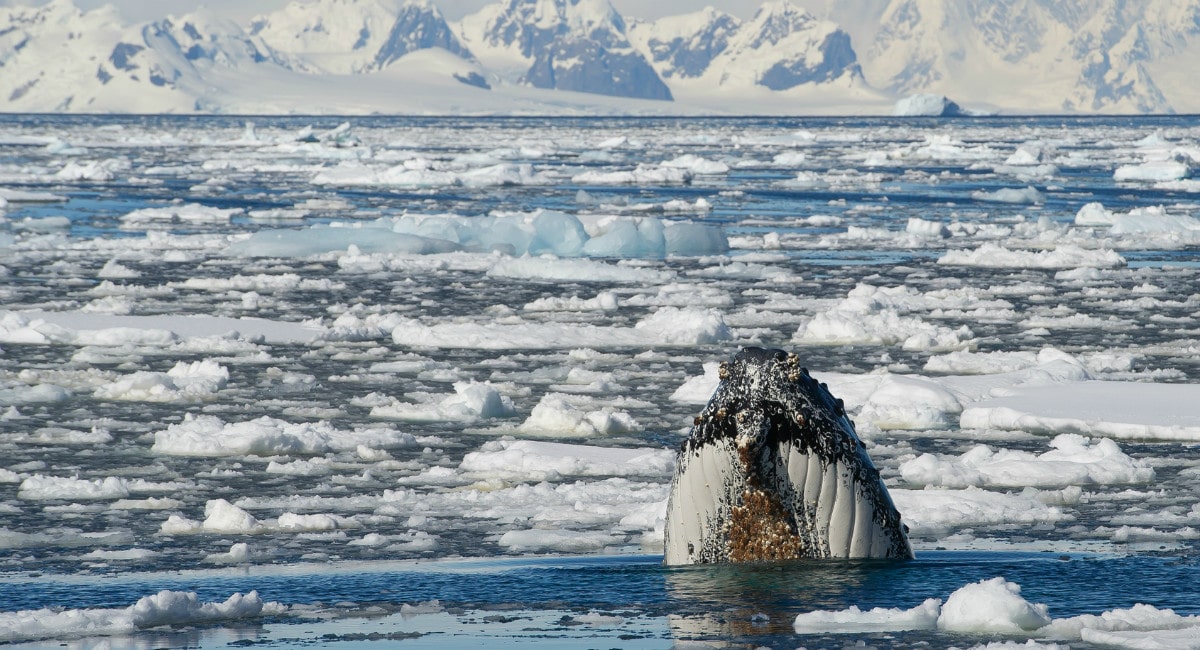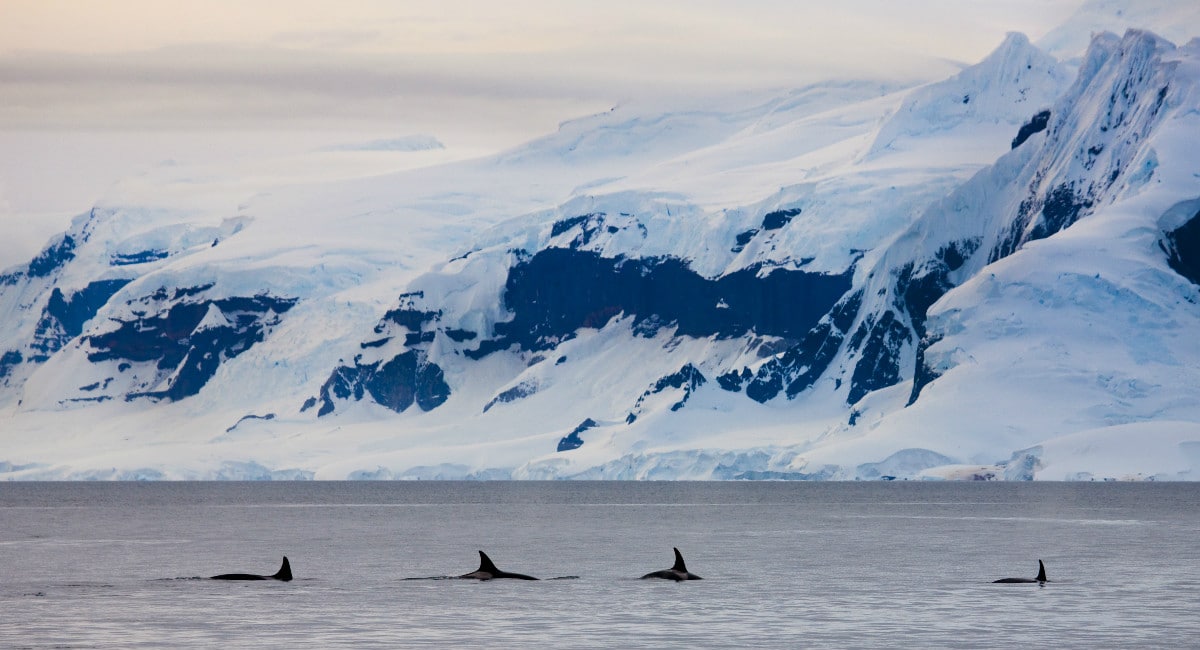The giants of the ocean, whales are an exceptional species of mammal capable of deep emotional and social connections with their pod. Seeing these majestic creatures lobtailing or swimming in the wild, enjoying their natural habitat whilst onboard an Aurora Expeditions cruise to Antarctica is sure to be a mesmerising experience — one that you cherish for a lifetime.
Keep your eyes peeled to spot one of these three different types of whale during your expedition. Our onboard experts will also be able to share interesting facts about these cetacean wonders of the ocean.
Humpback
Renowned for their musical songs that reverberate below the waves, humpback whales communicate through a series of howls, moans and cries that are distinctive enough that certain marine biologists suggest their communication could be considered as a form of language between family pods. They feed on an omnivorous diet of very small shrimp-like krill, plankton, but in mammoth quantities in order to feed their enormous bodies.
National Geographic notes they grow to between 14.6 and 19 metres on average, and the Sea Shepherd Conservation Society reports that adult females tend to be larger than males (13.7-15.2 metres compared to just 12.2-14.6 metres respectively). Mothers are also immensely close with their calves, often swimming together and touching flippers, and adult humpback females can weigh as much as 36,287kg!
Orca
Beautiful with white-and-black patterns on their bodies, orcas are carnivorous and feed on seals, penguins, sea lions and other marine life. Although they are commonly referred to as killer whales, orca are technically a member of the dolphin family.
Living alongside approximately 40 members in a pod, National Geographic reports that orcas hunt as a team, employing their nearly 10cm long teeth during their predatory hunts. Quick and nimble, orcas weigh around 5,443 kgs and grow up to 9.7m, an ideal physique for hunting and swimming.
Minke
Part of the baleen whale family, minke whales are relatively small at around 10 metres in length and weighing 9,200 kgs. Like the humpbacks, they have their own set of unique sounds including clicks and boings. They feast on plankton, krill, anchovies, cod and other sealife.
Whale World reports that there are healthier numbers of minke in the wild compared to other whale species — an expected 800,000 — but that they only live to around 50 years which is a far shorter lifespan relative to other whales. However, they are known for being particularly friendly towards ships and breach the surface of the water often, so your odds of coming across one are decent.
To learn more about our Antarctic expeditions, contact one of our Expeditions Experts today.


